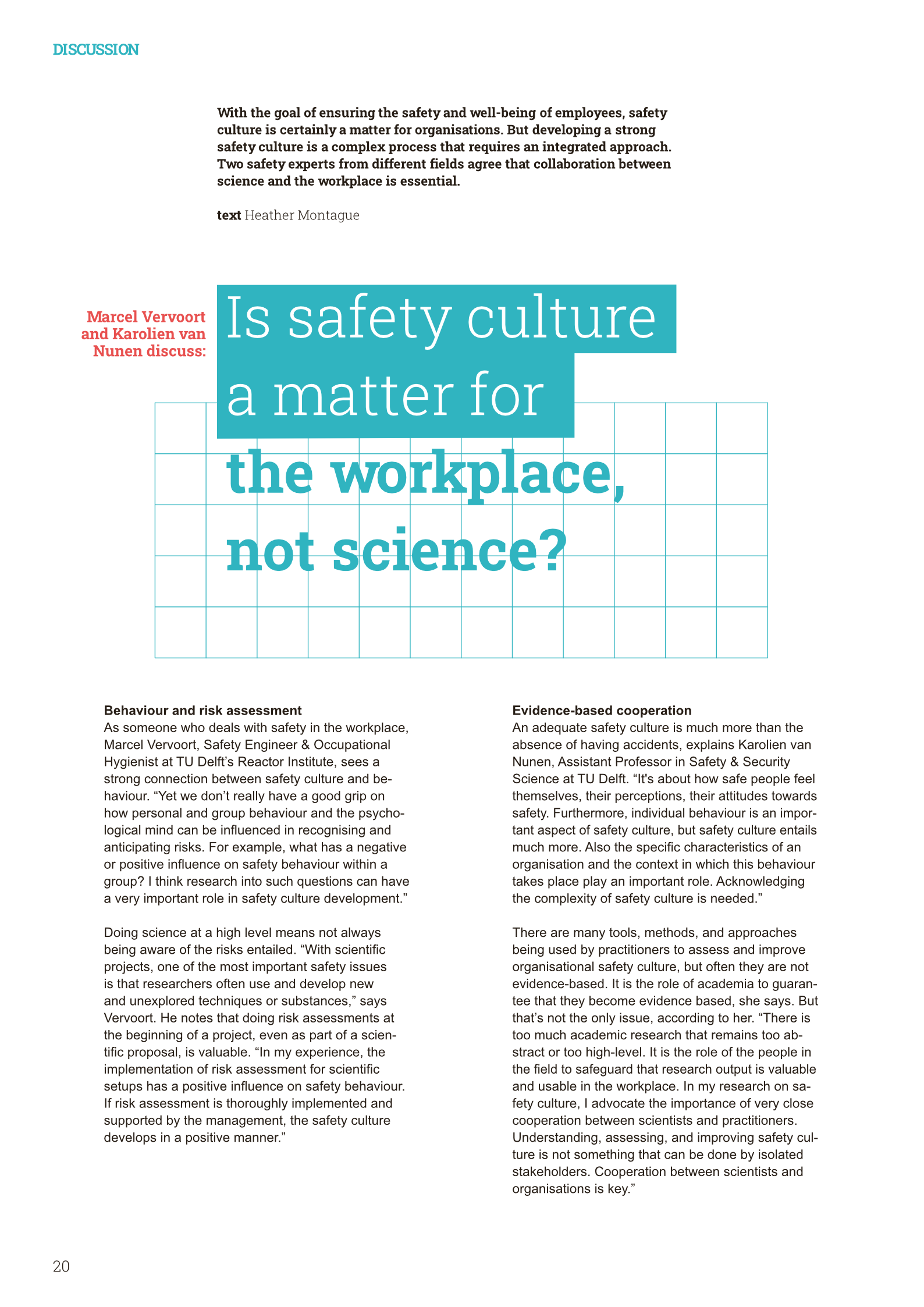Is Safety Culture a Matter for the Workplace, Not Science?
With the goal of ensuring the safety and well-being of employees, safety culture is certainly a matter for organisations. But developing a strong safety culture is a complex process that requires an integrated approach. Two safety experts from different fields agree that collaboration between science and the workplace is essential.
text Heather Montague
Behaviour and risk assessment
As someone who deals with safety in the workplace, Marcel Vervoort, Safety Engineer & Occupational Hygienist at TU Delft’s Reactor Institute, sees a strong connection between safety culture and behaviour. “Yet we don’t really have a good grip on how personal and group behaviour and the psychological mind can be influenced in recognising and anticipating risks. For example, what has a negative or positive influence on safety behaviour within a group? I think research into such questions can have a very important role in safety culture development.”
Doing science at a high level means not always being aware of the risks entailed. “With scientific projects, one of the most important safety issues is that researchers often use and develop new and unexplored techniques or substances,” says Vervoort. He notes that doing risk assessments at the beginning of a project, even as part of a scientific proposal, is valuable. “In my experience, the implementation of risk assessment for scientific setups has a positive influence on safety behaviour. If risk assessment is thoroughly implemented and supported by the management, the safety culture develops in a positive manner.”
Evidence-based cooperation
An adequate safety culture is much more than the absence of having accidents, explains Karolien van Nunen, Assistant Professor in Safety & Security Science at TU Delft. “It's about how safe people feel themselves, their perceptions, their attitudes towards safety. Furthermore, individual behaviour is an important aspect of safety culture, but safety culture entails much more. Also the specific characteristics of an organisation and the context in which this behaviour takes place play an important role. Acknowledging the complexity of safety culture is needed.”
There are many tools, methods, and approaches being used by practitioners to assess and improve organisational safety culture, but often they are not evidence-based. It is the role of academia to guarantee that they become evidence based, she says. But that’s not the only issue, according to her. “There is too much academic research that remains too abstract or too high-level. It is the role of the people in the field to safeguard that research output is valuable and usable in the workplace. In my research on safety culture, I advocate the importance of very close cooperation between scientists and practitioners. Understanding, assessing, and improving safety culture is not something that can be done by isolated stakeholders. Cooperation between scientists and organisations is key.

